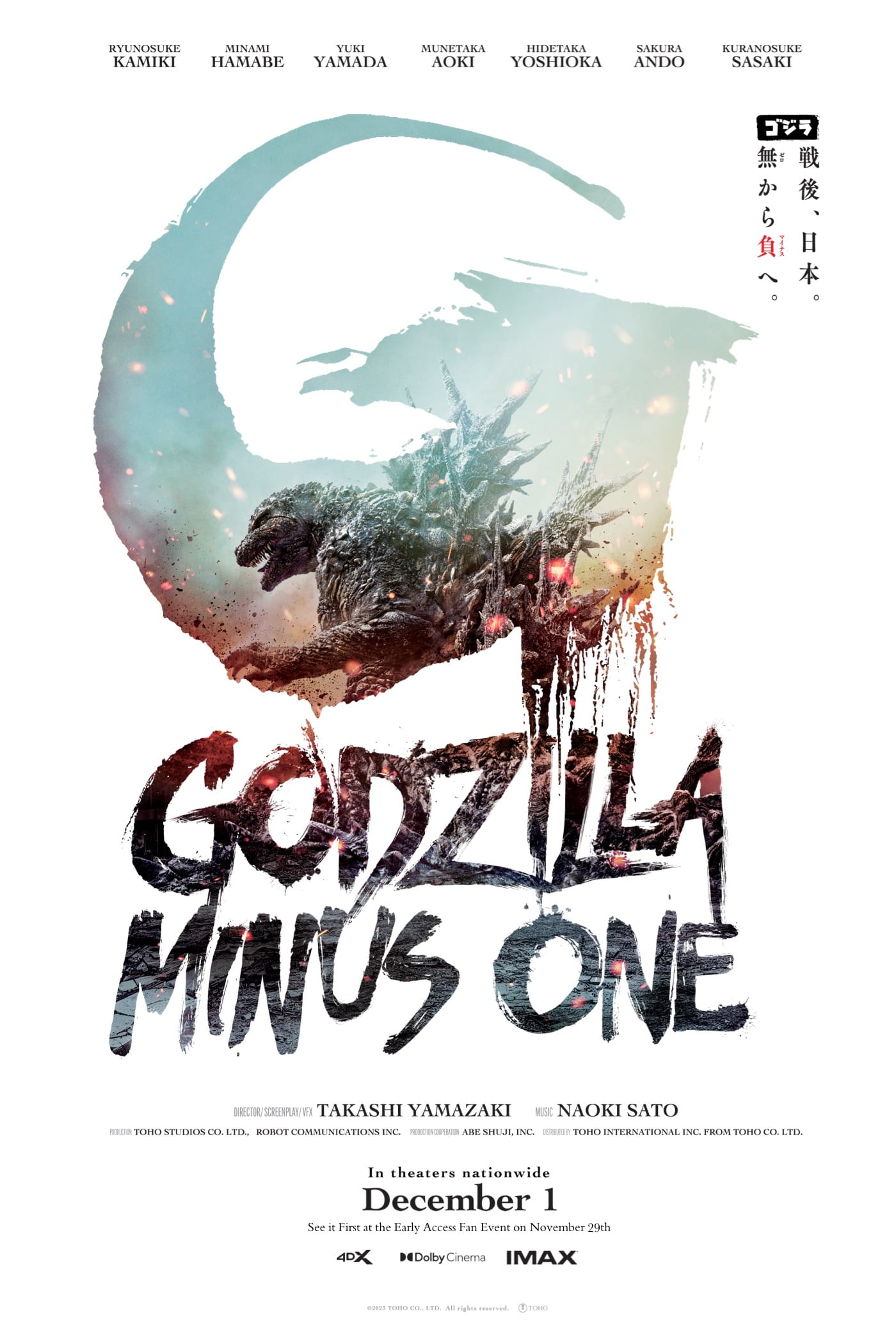
- Starring
- Ryunosuke Kamiki, Minami Hamabe, Yuki Yamada
- Writer
- Takashi Yamazaki
- Director
- Takashi Yamazaki
- Rating
- 14A (Canada), PG-13 (United States)
- Runtime
- 125 minutes
- Release Date
- December 1st 2023
Overall Score
Rating Summary
For almost seven decades, Godzilla has reigned supreme as the marquee monster movie franchise (celebrating its 70th anniversary next year), and it’s films like Minus One that exemplify why. The 37th installment in the Godzilla series, it not only ranks among the franchise’s finest entries, but also stands out as one of the best films of the year. Knowing the Godzilla franchise and all its clichés, different iterations, formulas, and styles, these days, it requires something truly unique to for a kaiju film to surprise this fanboy and Godzilla Minus One is a kaiju film that does exactly that, offering a refreshing new take that harkens to the spirit of the original films, boasting the scariest Godzilla yet with one of the most emotionally captivating human plots in any monster movie.
Set in the immediate post-World War II Japan, the film follows Kōichi Shikishima (Kamiki), a failed kamikaze pilot who returns home to a country in ruins and with no surviving family. In the wreckage of a fire-bombed Tokyo, he unwittingly becomes entwined with another survivor, Noriko Ōishi (Hamabe) and her adopted infant, another orphan of the war. Struggling with PTSD and his own feelings of cowardice from not sacrificing himself during war time, he has enough on his plate without factoring in the big G. Godzilla has always been a metaphor, a reflection of Japan’s anxieties and fears. In the 1954 original (made less than a decade after Hiroshima and Nagasaki), Godzilla represented the horrors of atomic weapons, right as Japan had rebuilt itself here comes Godzilla. In Minus One, Japan still hasn’t recovered yet from the war and the monster serves as a parallel to the struggles and pain of a country needing to come together to start anew in the post Imperial age. Godzilla’s arrival could not come at a worse time for the country, hence the title Minus One.
Unlike the current Monsterverse series (beginning with 2014’s Godzilla) which has shifted to pure pulpy sci-fi monster brawl action, Minus One brings back the far more serious and somber tone of the original film. Godzilla is the villain here, and when it causes destruction it’s less fun and more horrifying, easily making this film the closest the franchise has come to being scary. The VFX on Godzilla are astounding, especially considering the budget was only $15 million (it really makes one question Hollywood accounting) paired with a skilled eye behind the camera which grounds Godzilla seamlessly with the humans down below. With a mix of third-person and first-person perspectives to get a sense of the scale and danger that Godzilla reaps, making the fire breathing mutated lizard seem realistic in this world. What further intensifies the Godzilla scenes is the lack of military engagement with tanks and jets going off to no avail, a classic staple of the monster movie. With the film being set immediately after World War II, Japan’s military presence has been mostly excised and now relying on US aid, but due to the cold war starting to brew, America can’t get involved lest they anger the Soviet Union, thus leaving the Japanese people to come together on their own.
The historical setting and political situation inherently lend itself to a humanistic approach to its story, one that can exclusively deal with the fallout from the ground view without ever losing the personal angle driving the narrative. One can’t change their past but one can forge a new, better future for the next generation. It’s that throughline that runs through the film, expertly balancing the inherent spectacle and tragedy of the monster with a surprisingly emotional human core. While it occasionally dips into melodrama that may prove overly sentimental for some, it’s those needed bits of relief amidst the chaos that move and motivate us to keep living, to keep fighting. Often times in these types of films, even when the human drama is decent, there’s that inherent desire to “get to the fireworks factory”, see the spectacle and move past the story quickly to get to the next set piece. Throughout all 125 minutes of Minus One, this was not the case, never once feeling impatient or anxious to see Godzilla’s next appearance as the story as its characters were so engaging on their own.
In the end, Godzilla Minus One is a needed relief this year from a summer of formulaic, tired franchise fare. Here’s a 37th sequel that not only retains its roots, but continues to innovate, surprise and move audiences. For those who’ve never seen a Godzilla film or only know of its American versions, Minus One requires no prior knowledge and serves as a perfect jumping on point. It is truly a terrific blockbuster that never sacrifices its engaging and emotional narrative for spectacle, and it’s a film that will surely delight fans and non-fans alike. Highly recommended with the greatest of praise!
still courtesy of Toho International
If you liked this, please read our other reviews here and don’t forget to follow us on Twitter or Instagram or like us on Facebook.
Discover more from
Subscribe to get the latest posts sent to your email.

